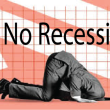by Jeff Shen, PhD, Co-CIO of Active Equities, Co-Head of Systematic Active Equity (SAE), Blackrock
Will value stock returns bound back in 2020 after a long period of underperformance? Jeff Shen puts a systematic investor’s lens on value to assess potential risk and reward.
Value investing has been a topic of conversation recently as investors have been on watch for the long-struggling factor to reverse its misfortune. Value has underperformed growth for so long that it is comparatively cheap. But that doesn’t automatically make it a buy.
What is value investing?
For a systematic, data-oriented investor, a value strategy generally involves buying stocks with cheap valuations while selling stocks that screen as expensive. “Cheap” and “expensive” are measured using traditional valuation metrics such as price-to-book or price-to-earnings ratios.
The value factor has struggled for the better part of the past decade, not only underperforming other factors, but delivering negative returns. A look at the S&P 500 Growth and Value indexes shows that growth outpaced value by more than 80% over the 10 years ended Dec. 31, 2019.
After this dismal run, some believe the investment opportunity in value looks more attractive than ever. Prices surely must go back up, they argue. Others have made the case for various ways to “repair” value to improve its performance.
Common sense or common misconceptions?
The concept of value investing is fairly intuitive and, for that reason, is often well received by many investors. At its most basic level, value implies buying low and selling high ― the crux of fruitful investing. A value strategy also presumes there is some justice in investing ― that stock prices ultimately must reflect a company’s underlying fundamentals.
Despite the appeal of these arguments, value as a concept may suffer from structural problems. First, some market participants suggest the relatively strong macroeconomic backdrop in recent years has simply favored growth over value. Yet buying low and selling high, the basis of value investing, should theoretically deliver regardless of the economic environment.
Second, assessing a company’s true worth requires some objective measurement of intrinsic, or fundamental, value. In part, this means investors must know how much cash flow they may receive at specific points in time. The flaw: Companies provide no promise of cash flows; managements have the discretion to determine when dividends are paid and how much.
Ultimately, estimating valuations requires a dose of guesswork, both about the overall market environment and a company’s future performance. Analyst projections may help in this regard, but our research suggests stock prices, which naturally fluctuate daily, may be an even better indicator of fundamentals.
We observed that when stock prices were cheap, it was generally because markets were anticipating a deterioration in company fundamentals. Our conclusion: The idea that stock prices will mean-revert to some former valuation level, duly acknowledging underlying fundamentals, may be faulty without credible, objective projections of said fundamentals. Low valuations could remain low.
A systematic lens for viewing value
We conducted an analysis that looked at traditional metrics underpinning value investing, particularly the spread between high-valuation companies and low-valuation companies (as measured by price-to-book ratio). What we found: This “value spread” (or relative cheapness of value stocks) proved to be a poor guide to future investment returns ― but was a better indicator of volatility, or risk.
We looked at the value spread from 1927 to 2019, and plotted value stocks’ returns and volatility in the following year. When the spread was higher, returns from low-valuation (value) stocks were more dispersed ― a sign of higher volatility.
In 2019, the value spread was fairly high, as shown in the chart below. This may make value stocks appear attractively priced ― and some investors may be tempted to return to value in hopes those prices are primed to march back up.
But the evidence suggests that cheap valuations make no promise of higher returns to come. If our data is any indication, investors hopeful for higher returns from value stocks in 2020 may instead only see higher volatility. This may argue for a more diversified approach rather than heaping more eggs into the value basket.
Jeff Shen, PhD, is Co-CIO of Active Equities and Co-Head of Systematic Active Equity (SAE) at BlackRock. He is a regular contributor to The Blog.
Index return cited within from Bloomberg.
*****
Investing involves risk, including possible loss of principal. Stock values fluctuate in price so the value of your investment can go down depending on market conditions. International investing involves risks, including risks related to foreign currency, limited liquidity, less government regulation and the possibility of substantial volatility due to adverse political, economic or other developments. These risks may be heightened for investments in emerging markets.
This material is not intended to be relied upon as a forecast, research or investment advice, and is not a recommendation, offer or solicitation to buy or sell any securities or to adopt any investment strategy. The opinions expressed are as of January 2020 and may change as subsequent conditions vary. The information and opinions contained in this post are derived from proprietary and nonproprietary sources deemed by BlackRock to be reliable, are not necessarily all-inclusive and are not guaranteed as to accuracy. As such, no warranty of accuracy or reliability is given and no responsibility arising in any other way for errors and omissions (including responsibility to any person by reason of negligence) is accepted by BlackRock, its officers, employees or agents. This post may contain “forward-looking” information that is not purely historical in nature. Such information may include, among other things, projections and forecasts. There is no guarantee that any forecasts made will come to pass. Reliance upon information in this post is at the sole discretion of the reader.
©2020 BlackRock, Inc. All rights reserved. BLACKROCK is a registered trademark of BlackRock, Inc. All other marks are the property of their respective owners.
USRMH0120U-1065386-1/1
This post was first published at the official blog of Blackrock.














